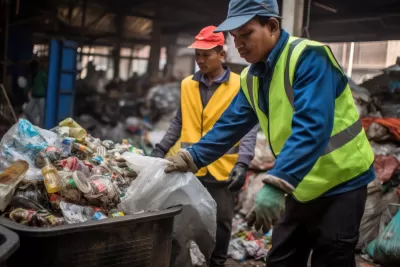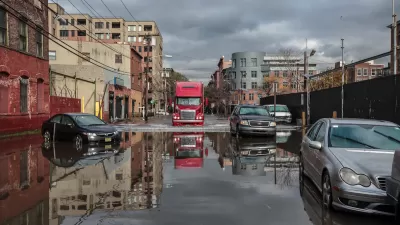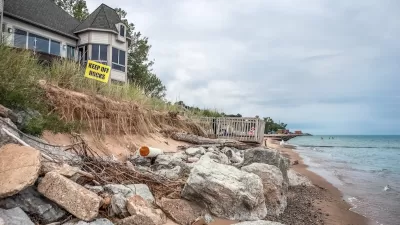Building sustainable, equitable cities of the future, must take into account the important and often overlooked tasks performed by informal workers.

In a blog post for the International Institute for Environment and Development (IIED), Sonia Dias outlines how cities can harness the power of informal workers to build resilience and economic diversity, particularly in countries where informal economies are a thriving part of the local economy. “Recognising street vendors, domestic workers, home-based workers and waste pickers by acknowledging their key role in urban economies and their co-production of urban plans, will help create cleaner, greener, socially responsive, vibrant, and ultimately resilient cities.”
As Dias explains, the Women in Informal Employment: Globalizing and Organizing (WIEGO) research policy network has released a roadmap called Rights to the City that charts a set of principles that “envisions cities with diverse and inclusive economies that ‘safeguard and ensure access to secure livelihoods and decent work for all inhabitants.’”
These principles include “Recognition that most informal activities are legitimate efforts by the urban poor to forge their livelihoods in often hostile policy environments,” “Regulations that enable access to public space and natural resources for informal livelihood activities,” and “Provision of basic infrastructure and transport services in informal settlements and informal workplaces.”
“The ability of cities to withstand shocks and crises is predicated by the ability of communities, informal settlements and different sectors of the economy – including informal ones – to prepare, react, resist and bounce back.” To this end, Dias writes, “Recognition and strengthening of informal economies may be a key way to increase urban resilience.”
FULL STORY: Building resilient cities with the resilience of informal workers

Study: Maui’s Plan to Convert Vacation Rentals to Long-Term Housing Could Cause Nearly $1 Billion Economic Loss
The plan would reduce visitor accommodation by 25,% resulting in 1,900 jobs lost.

North Texas Transit Leaders Tout Benefits of TOD for Growing Region
At a summit focused on transit-oriented development, policymakers discussed how North Texas’ expanded light rail system can serve as a tool for economic growth.

Why Should We Subsidize Public Transportation?
Many public transit agencies face financial stress due to rising costs, declining fare revenue, and declining subsidies. Transit advocates must provide a strong business case for increasing public transit funding.

How Community Science Connects People, Parks, and Biodiversity
Community science engages people of all backgrounds in documenting local biodiversity, strengthening connections to nature, and contributing to global efforts like the City Nature Challenge to build a more inclusive and resilient future.

Alabama: Trump Terminates Settlements for Black Communities Harmed By Raw Sewage
Trump deemed the landmark civil rights agreement “illegal DEI and environmental justice policy.”

Dear Tesla Driver: “It’s not You, It’s Him.”
Amidst a booming bumper sticker industry, one writer offers solace to those asking, “Does this car make me look fascist?”
Urban Design for Planners 1: Software Tools
This six-course series explores essential urban design concepts using open source software and equips planners with the tools they need to participate fully in the urban design process.
Planning for Universal Design
Learn the tools for implementing Universal Design in planning regulations.
City of Santa Clarita
Ascent Environmental
Institute for Housing and Urban Development Studies (IHS)
City of Grandview
Harvard GSD Executive Education
Toledo-Lucas County Plan Commissions
Salt Lake City
NYU Wagner Graduate School of Public Service





























